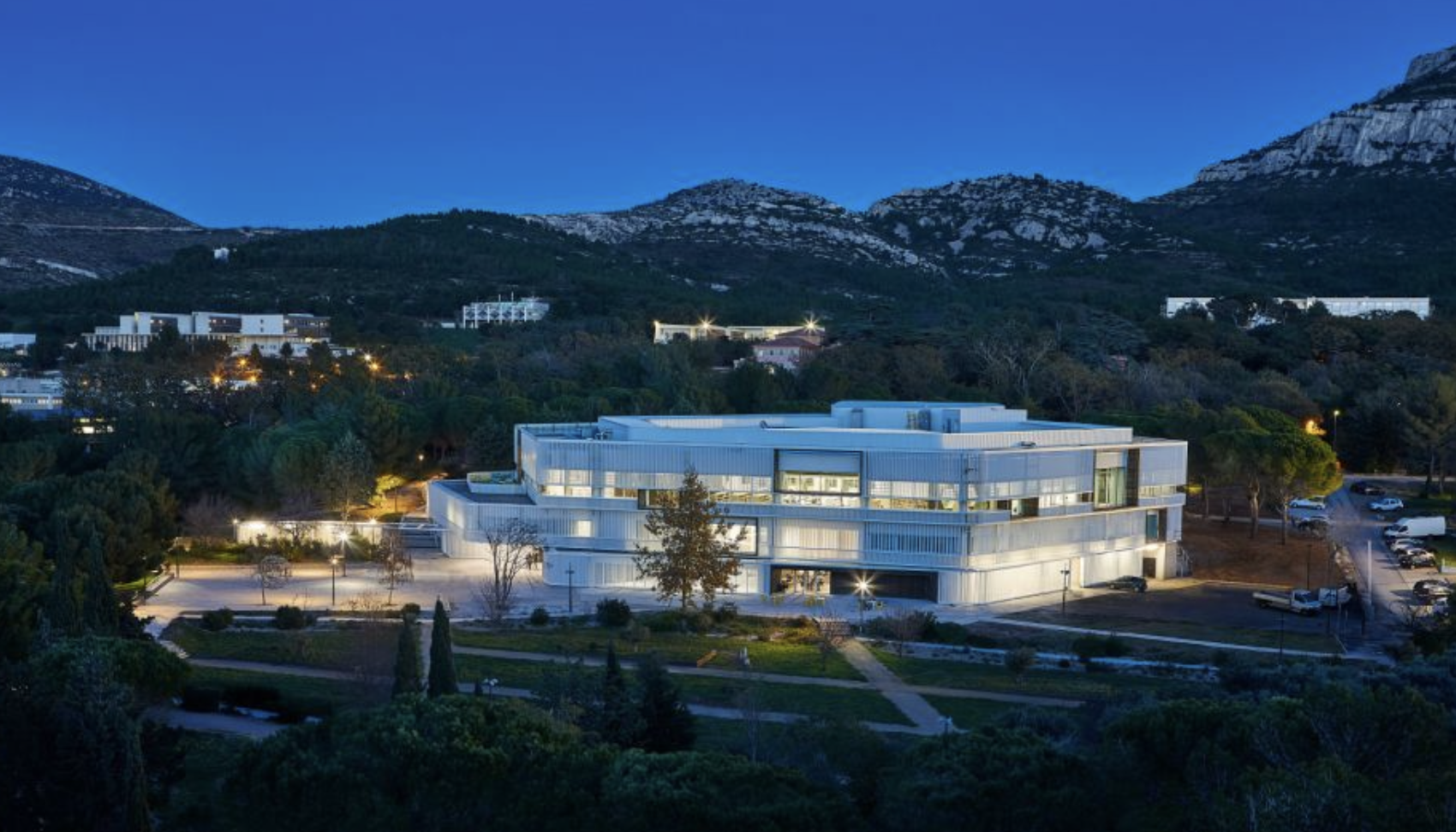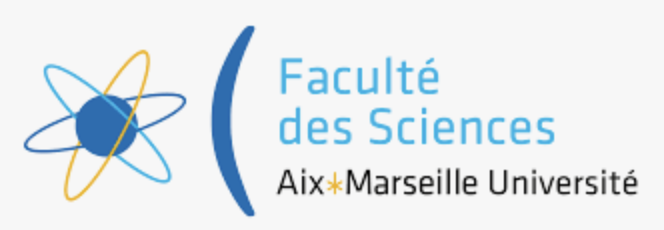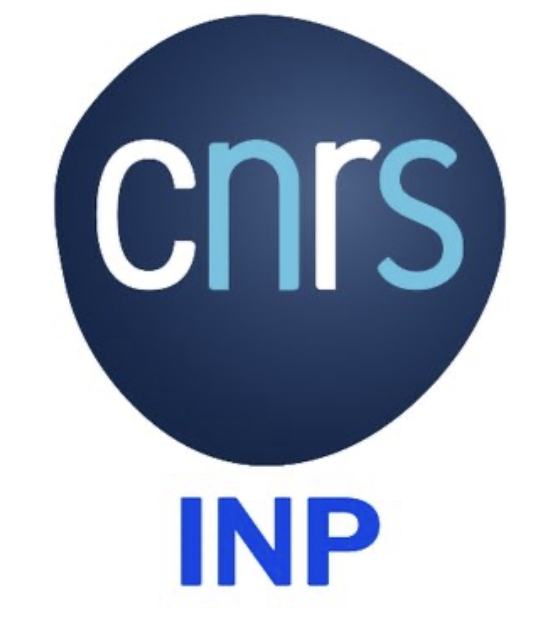Huitième Assemblée Générale du GdR Ondes Gravitationnelles
amphithéâtre l’Hexagone
Université Aix Marseille, Campus Luminy

Le GdR Ondes Gravitationnelles (http://gdrgw.in2p3.fr/) a été crée en 2017 avec le but de rassembler la communauté scientifique intéressée par l’exploration de l’Univers avec les ondes gravitationnelles, et de lui fournir des occasions de rencontres et de discussions communes.
La huitième assemblée générale du GdR Ondes Gravitationnelles se tiendra en présence à l'Université Aix-Marseille, dans l'amphithéâtre l’Hexagone au coeur du campus de Luminy. Elle couvrira les thèmes d’intérêt du GdR, représentés par ses Groupes de Travail.
L'inscription à cette réunion est obligatoire avant le 13 septembre 2024. Il faut, au préalable, devenir membre du GdR en s'inscrivant sur le site http://gdrgw.in2p3.fr/ si vous ne l'êtes pas déjà.
La date limite pour envoyer une contribution est le 13 septembre 2024.

-
-
Buffet d'accueil
-
Raffaele D'Agnolo: Where to Look and How to Look for High-Frequency Gravitational Waves amphithéâtre l’Hexagone
amphithéâtre l’Hexagone
Université Aix Marseille, Campus Luminy
163 Av. de Luminy, 13009 Marseille, France -
FORMES D'ONDES amphithéâtre l’Hexagone
amphithéâtre l’Hexagone
Université Aix Marseille, Campus Luminy
163 Av. de Luminy, 13009 Marseille, France-
1
Gravitational radiation reaction and flux-balance equationsOrateur: Luc Blanchet (C.N.R.S.)
-
2
Revisiting 2PN Hamiltonian mechanics of binary black holesOrateur: Sashwat Tanay (LUTH, Paris Observatory)
-
3
Vanishing of Quadratic Love Numbers of Schwarzschild Black HolesOrateur: M. Nikola Savic (IPhT Paris)
-
4
Studying Lorentz symmetry violations through gravitational waves and the SME formalismOrateur: Samy Aoulad Lafkih (Observatoire de Paris)
-
1
-
POPULATION DES SOURCES amphithéâtre l’Hexagone
amphithéâtre l’Hexagone
Université Aix Marseille, Campus Luminy
163 Av. de Luminy, 13009 Marseille, France-
5
Towards LISA population studyOrateur: Alexandre Toubiana (Max Planck Institute for Gravitational Physics)
-
6
Probing BNS Gravitational Wave Background with ET: From Inspiral to Post-MergerOrateur: Léonard Lehoucq (Institut d'Astrophysique de Paris)
-
7
Forecasting the population properties of merging black holesOrateur: Viola De Renzis (University of Milano-Bicocca)
-
8
Kilonovae Associated with a Neutron Star-Black Hole Merger : an example study with O4 NSBH candidatesOrateur: Marion Pillas (ULiège)
-
5
-
Pause café
-
Discussion sur le nouveau groupe de travail "Environnement" amphithéâtre l’Hexagone
amphithéâtre l’Hexagone
Université Aix Marseille, Campus Luminy
163 Av. de Luminy, 13009 Marseille, France -
TESTS DE LA RELATIVITÉ GÉNÉRALE ET THÉORIES ALTERNATIVES amphithéâtre l’Hexagone
amphithéâtre l’Hexagone
Université Aix Marseille, Campus Luminy
163 Av. de Luminy, 13009 Marseille, France-
9
Non-linear gravitational waves in Horndeski gravityOrateur: Hugo Roussille (École Normale Supérieure de Lyon)
-
10
Gravitational waves from quasielliptic compact binary systems in massless scalar-tensor theoriesOrateur: David Trestini (FZU)
-
11
Probing General Relativity with the inspiral of Massive Black Hole BinariesOrateur: Manuel Piarulli (L2IT, Université Toulouse III - Paul Sabatier)
-
12
Gravitational Waves inspiral tests of General Relativity in the framework of the Einstein TelescopeOrateur: Alessandro Agapito (Groupement de recherche ondes gravitationnelles)
-
9
-
PRÉDICTION ET SUIVI DES SIGNAUX MULTI-MESSAGER amphithéâtre l’Hexagone
amphithéâtre l’Hexagone
Université Aix Marseille, Campus Luminy
163 Av. de Luminy, 13009 Marseille, France-
13
ET-WST synergy for next generation gravitational wave multi-messenger observationsOrateur: Sofia Bisero (GEPI, Observatoire de Paris, Université PSL, CNRS)
-
14
GRANDMA follow-up of LVK campaigns O3 and O4 so far, and perspectivesOrateur: Thomas HUSSENOT-DESENONGES (IJCLAB - A2C/OG)
-
15
Spectral signatures of LISA binary black holesOrateur: Sandrine Lescaudron (Institute of Theoretical Astrophysics, University of Oslo, 0315 Oslo, Norway)
-
16
Electromagnetic follow-up during the LISA missionOrateur: Pierre-Alexandre Duverne (APC)
-
13
-
Cocktail
-
-
-
ÉTOILES A NEUTRONS, SUPERNOVÆ ET SYNTHÈSES DES ÉLÉMENTS LOURDS amphithéâtre l’Hexagone
amphithéâtre l’Hexagone
Université Aix Marseille, Campus Luminy
163 Av. de Luminy, 13009 Marseille, France-
17
Detectability of a phase transition in neutron star matter with third-generation gravitational wave interferometersOrateur: Chiranjib Mondal (Universite Libre de Bruxelles)
-
18
ROXAS: a new spectral code for isolated neutron star gravitational waves signalOrateur: Gaël Servignat (LUTH)
-
19
Gravitational wave signal of proto-neutron star convectionOrateur: Raphaël Raynaud (CEA Saclay)
-
20
Explosive nucleosynthesis and multimessenger emission from extreme stellar explosionsOrateur: Matteo Bugli (CEA - Saclay)
-
17
-
Pause café
-
Shanika Galaudage: The latest results from the LIGO-Virgo-KAGRA collaboration: O4 is here amphithéâtre l’Hexagone
amphithéâtre l’Hexagone
Université Aix Marseille, Campus Luminy
163 Av. de Luminy, 13009 Marseille, France -
DEVELOPPEMENT DES DETECTEURS amphithéâtre l’Hexagone
amphithéâtre l’Hexagone
Université Aix Marseille, Campus Luminy
163 Av. de Luminy, 13009 Marseille, France-
21
Frequency and phase noise reduction for laser: tests in CALVA and possible implementation on VirgoOrateur: Manuel Andia (IJCLab)
-
22
Modelling Newtonian noise of vibroacoustic origin in the Virgo gravitational wave detectorOrateur: Francois Gautier (LAUM, Laboratoire d'Acoustique de l'Université du Mans, UMR CNRS 6613)
-
23
Neutralizing the electrostatic charges on the Virgo Test MassesOrateur: Dr Samuel Salvador (LPC Caen)
-
21
-
Germano Nardini: LISA as a probe of particle physics amphithéâtre l’Hexagone
amphithéâtre l’Hexagone
Université Aix Marseille, Campus Luminy
163 Av. de Luminy, 13009 Marseille, FranceOne of the primary objectives of the LISA mission is to measure and characterize the stochastic gravitational-wave background (SGWB). Achieving this goal will allow LISA to explore various domains, including astrophysics, cosmology, and particle physics. This talk will focus on the latter, specifically on physics beyond the Standard Model that involves strong first-order phase transitions. We will demonstrate that LISA holds significant potential for advancing particle physics. Indeed, by utilizing the reconstruction of the SGWB from first-order phase transitions, LISA will accurately constrain the parameter space of particle physics models.
-
Déjeuner au buffet ( )
-
COSMOLOGIE amphithéâtre l’Hexagone
amphithéâtre l’Hexagone
Université Aix Marseille, Campus Luminy
163 Av. de Luminy, 13009 Marseille, France-
24
Current status of the cosmological analysis pipelines in LVKOrateur: Benoît Revenu (subatech)
-
25
Debiasing H0 measurements from gravitational-wave and γ-ray burst observationsOrateur: Michele Mancarella (Aix-Marseille Université)
-
26
Probing cosmic expansion with gravitational wave-large scale structure correlationsOrateur: Sayantani Bera (CPT, Aix-Marseille Université)
-
27
Detecting dark matter oscillations with gravitational waveformsOrateur: Patrick VALAGEAS (CEA Saclay)
-
24
-
Aurélien Chalumeau. On the road to the detection and interpretation of the nano-Hertz Gravitational Waves with Pulsar Timing Arrays amphithéâtre l’Hexagone
amphithéâtre l’Hexagone
Université Aix Marseille, Campus Luminy
163 Av. de Luminy, 13009 Marseille, FranceIn June 2023, the International Pulsar Timing Array (IPTA) collaboration, comprising the European Pulsar Timing Array (EPTA), the Indian Pulsar Timing Array (InPTA), NANOGrav, and the Parkes Pulsar Timing Array (PPTA), simultaneously announced the first compelling evidence of the very-low-frequency (nHz) gravitational wave background. This result was followed by a detailed comparative analysis at the IPTA level, enhancing the robustness of the results by demonstrating consistency, accounting for the differences across data sets and noise models. In this presentation, I will review these different results and outline the key challenges faced by the EPTA in further optimizing sensitivity and resolving specific peculiarities in our results. Additionally, I will discuss the upcoming Third Data Release of the IPTA, exploring its potential to detect nano-Hertz gravitational waves, and will highlight the complexities involved in interpreting a measured signal with Pulsar Timing Arrays.
-
Pause café
-
MÉTHODES D’ANALYSE DES DONNÉES amphithéâtre l’Hexagone
amphithéâtre l’Hexagone
Université Aix Marseille, Campus Luminy
163 Av. de Luminy, 13009 Marseille, France-
28
A first exploration of the impact of waveform systematics on the LISA analysis massive black hole binariesOrateur: Sylvain Marsat (L2I Toulouse, CNRS/IN2P3, UT3)
-
29
A new stacking pipeline to detect gravitational waves signals from repeatersOrateur: Hugo Einsle (Université Côte d'Azur)
-
30
Source classification and properties provided in low-latency by the LVK collaborationOrateur: Florian Aubin (IPHC)
-
31
Searching for the Stochastic Gravitational-Wave Background with Ground-Based DetectorsOrateur: Jishnu Suresh (ARTEMIS, Observatoire de la Côte d'Azur)
-
28
-



